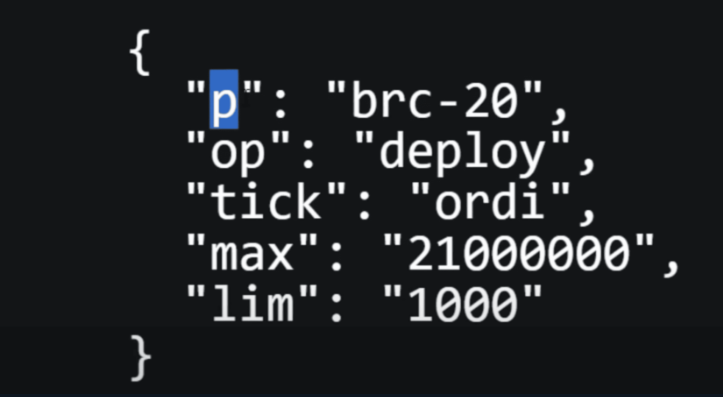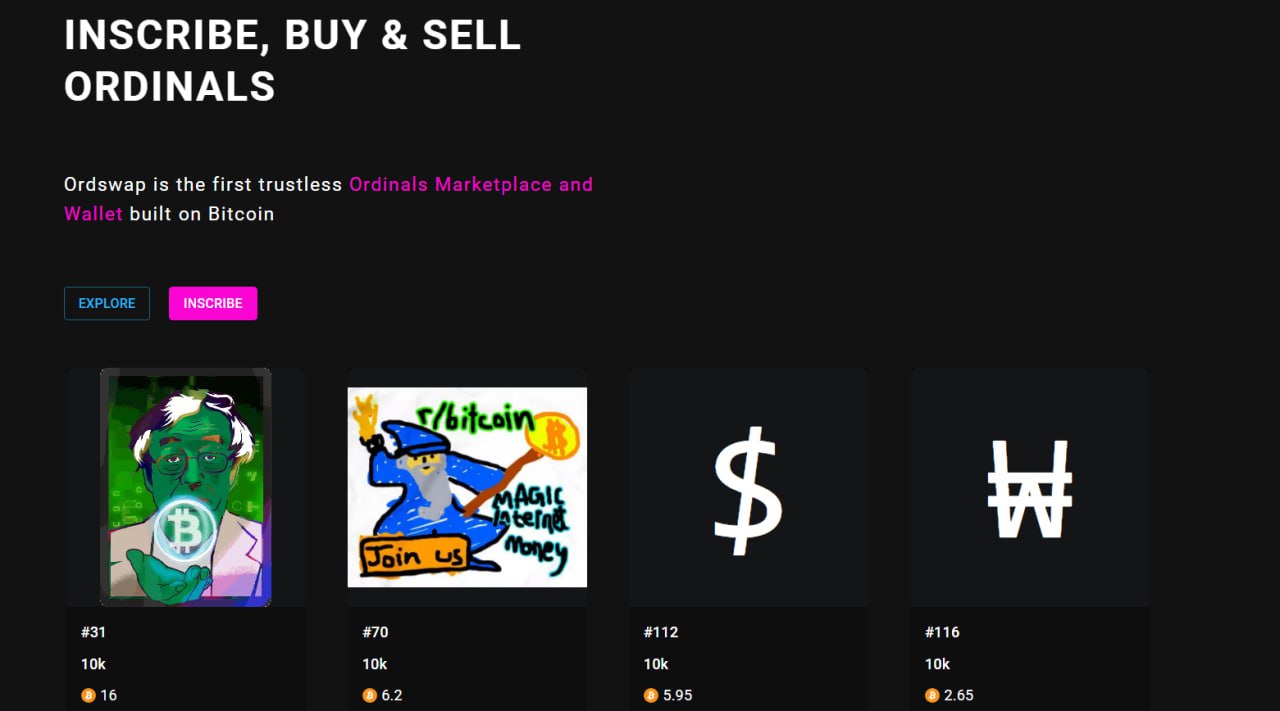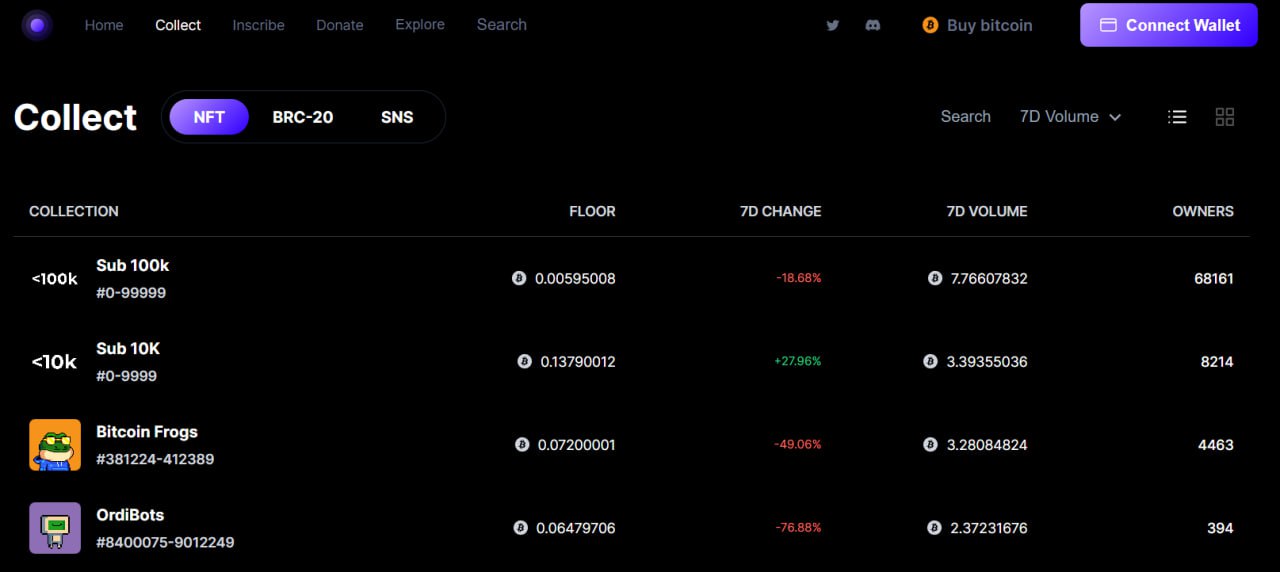BRC-20 is an experimental token standard introduced in March 2023 by an anonymous on-chain analyst known as Domo in the cryptocurrency community, based on the Bitcoin (BTC) blockchain.
Contents:
- What are BRC-20 tokens
- Functions of BRC-20 tokens: Creation, mining, and exchange
- Popular BRC-20 tokens and their market capitalization
- Best wallets for BRC-20 tokens
- Advantages and disadvantages of the BRC-20 standard
- Conclusion
What are BRC-20 tokens
The emergence of the BRC-20 standard for tokens was driven by the growing interest of the cryptocurrency community in the Ordinals protocol, launched in early 2023, which allows the integration of NFTs into satoshis.
To better understand the workings of the Ordinals protocol, it is important to grasp how it operates. This protocol is a numbering system that assigns a unique serial number, called an ordinal, to each satoshi and tracks its movements within transactions. Thus, the protocol makes each satoshi unique by adding additional data that can be considered as "inscriptions".
Satoshi, named after the creator of Bitcoin, Satoshi Nakamoto, is the smallest indivisible unit of Bitcoin (BTC). One BTC contains 100,000,000 satoshis, which means that each satoshi is equal to 0.00000001 BTC. The numbering system of satoshis is based on their order of creation and movement. The numbering order is determined by the date of creation of the satoshi, and the movement order is based on the dates of transaction inputs and outputs. That is why this system is called "ordinals."
The BRC-20 standard allows for the addition of JSON (JavaScript Object Notation) data to satoshis, making the token ready for deployment, creation, and transfer.

The first token issued according to the BRC-20 standard is named ORDI. In the following months, numerous other tokens corresponding to this standard were released. Most of them were meme coins that did not carry fundamental value. In May 2023, some altcoins created according to the BRC-20 standard showed impressive price growth. However, due to the increased demand for these assets, transaction fees on the Bitcoin blockchain surged, leading to significant network congestion.
Since the BRC-20 standard is relatively new, the processes of token deployment, creation, and transfer can be complex for users. The number of tools supporting this new format is limited.
Functions of BRC-20 Tokens: Creation, Mining, and Exchange
Managing all existing tokens involves three main aspects:
- Creation or deployment
- Generation or mining of new tokens
- Token exchange to meet buying and selling requirements
While BRC-20 tokens are not based on smart contracts and do not support the Ethereum Virtual Machine, their deployment still involves the use of JSON as metadata. Let's delve into this process in more detail.
We previously discussed the process of using JSON for token deployment or creation. When you navigate to a compatible trading platform or BRC-20 wallet like UniSat, you have the option to click the "deploy" button and create your own BRC-20 token, following the provided instructions. Once the token is created and its characteristics, such as maximum supply and emission limit, are set, you can proceed with the process of generating new tokens (minting).
If you need to transfer tokens to meet buying or selling requirements, the process will be as follows:
- Step 1 - transfer from sender
- Step 2 - from sender to receiver, send an inscription to the receiver
The process represents a function or f(x) that includes a sequence of steps and concludes with task completion.
Functions of BRC-20 Tokens: Creation, Mining, and Exchange
Managing all existing tokens involves three main aspects:
- Creation or deployment
- Generation or mining of new tokens
- Token exchange to meet buying and selling requirements
While BRC-20 tokens are not based on smart contracts and do not support the Ethereum Virtual Machine, their deployment still involves the use of JSON as metadata. Let's delve into this process in more detail.
We previously discussed the process of using JSON for token deployment or creation. When you navigate to a compatible trading platform or BRC-20 wallet like UniSat, you have the option to click the "deploy" button and create your own BRC-20 token, following the provided instructions. Once the token is created and its characteristics, such as maximum supply and emission limit, are set, you can proceed with the process of generating new tokens (minting).
If you need to transfer tokens to meet buying or selling requirements, the process will be as follows:
- Step 1 - transfer from sender
- Step 2 - from sender to receiver, send an inscription to the receiver
The process represents a function or f(x) that includes a sequence of steps and concludes with task completion.
Each step of this process is an inscription and is classified as a transaction. As each small operation requires its own inscription, it is not surprising that the increased interest in BRC-20 has led to network congestion.
Despite the experimental nature of BRC-20, tokens conforming to this standard encompass all three management aspects. This makes them more useful and functional compared to standard Bitcoin NFTs created using the Ordinals protocol. If the BRC-20 format is widely adopted, users will be able to create new tokens, issue coins, and trade them, significantly expanding the utility of the BTC blockchain.
Popular BRC-20 Tokens and Their Market Capitalization
According to information from the BRC-20.io trading platform, as of mid-May, there were 14,307 tokens registered with a total market capitalization exceeding $465 million.

Please note that the list includes popular meme coins such as SHIB and PEPE, but their price significantly differs from their "real" value. In fact, these tokens have no connection to the originals - BRC-20 token creators simply used well-known coin names to trade these tokens on the Bitcoin network.
Top Wallets for BRC-20 Tokens
Currently, the number of wallets supporting BRC-20 standard tokens is limited. However, there are a few options worth considering.
UniSatThe most in-demand and efficient open-source wallet.Ordinals Wallet A wallet that supports Ordinals and BRC-20 tokens.OrdswapThe first marketplace for trading BRC-20 tokens with built-in storage functionality.


Advantages and Disadvantages of the BRC-20 Standard
Advantages:
- The BRC-20 token standard expands the use cases of Bitcoin.
- Unlike ERC-20 tokens, creating and issuing BRC-20 tokens is easy and straightforward.
- The security of BRC-20 tokens is guaranteed by using the most reliable blockchain.
- The BRC-20 standard opens up extensive opportunities for second-layer development and scalability of the Bitcoin network.
Disadvantages:
- BRC-20 tokens do not have direct integration with the Bitcoin network. Creating a BRC-20 token is a simple way to embed metadata into satoshis.
- Interacting with BRC-20 tokens requires the use of various tools and crypto wallets.
- BRC-20 tokens incentivize trading on centralized exchanges (CEX), which may contradict the decentralized philosophy of Bitcoin.
- BRC-20 transactions can cause network congestion.
- BRC-20 tokens may be considered unregistered securities issued on the BTC blockchain.
Conclusion
The introduction of the BRC-20 standard has sparked mixed reactions within the crypto community. Some participants believe that blockchain should remain simple, limited to basic storage and transfer functions. Meanwhile, others welcome the new possibilities for utilizing the Bitcoin network. The introduction of BRC-20 tokens has also led to competition for block space with regular transactions, resulting in increased network fees. However, supporters of the new standard argue that higher fees incentivize miners to secure the blockchain.
The new token standard has brought significant innovations to the cryptocurrency space. Whether it can solidify its position in the ecosystem will be determined over time.




